Who doesn’t love a very good citadel? There are loads close to Paris – from the inevitable Versailles and Fontainebleau to the equally beloved Chantilly, Vincennes or Vaux-le-Vicomte. Just lately I visited three historic under-the-radar châteaux which are straightforward day journeys from Paris: Chateaudun, Anet and Maintenon. Right here’s what I discovered.
Overlook the lengthy strains and selfie sticks and bus excursions at France’s most well-known castles. With 45,000 French châteaux ready to be explored, you’ll be able to simply step into historical past with out having to battle crowds.
The three I’m about to explain share fascinating histories and beautiful structure. They’re inside day journey distance of Paris, however they’re off the overwhelmed path, and also you’ll be capable of expertise them in relative tranquility. I plan to shock you.
NOTE: Pages on this website could include affiliate hyperlinks, which herald a small fee for free of charge to you.
All three châteaux sit within the Eure-et-Loir division, within the “official” area referred to as Centre-Val-de-Loire, roughly equal to the jap Loire Valley, southwest of Paris.
And all three can simply be reached from Paris by automobile or prepare, making for one or a number of fantastic day journeys.
A GEOGRAPHICAL NOTE
The Eure-et-Loir division has no “e” in Loir, whereas the area, Centre-Val-de-Loire, does. So does the well-known Loire River, so stuffed with castles. The bigger river on this case is the Loire, and a smaller tributary is the Loir. Complicated? It will get much more attention-grabbing!
If I’ve chosen these three, it’s not solely as a result of they’re inside straightforward attain of Paris or are stunning or culturally necessary, but in addition as a result of every was owned by a captivating historic character.
Chateaudun
Whenever you drive from Paris in direction of the Loire Valley, Chateaudun is the primary citadel alongside your route and is usually referred to as “the primary Loire château”.
It’s additionally the primary traditionally, relationship again to the twelfth century. Regardless of many expansions and renovations over 4 centuries, Chateaudun retains a fortress-like side, particularly if seen from the “again”.
So sure, it’s principally medieval, with fairly a little bit of Gothic, and acts as a bridge to the Renaissance with its grand staircase, referred to as the “Escalier d’honneur”, thought-about one of many first examples of Italianate affect in France: it’s open, ornate and fewer utilitarian than staircases normally have been again then.
Whereas I wasn’t capable of climb to the highest, I did get to admire it each from inside and from the skin.
 |
If you happen to’ve been following the historical past of Joan of Arc, you would possibly bear in mind the title Jean de Dunois, her companion-in-arms. He was the illegitimate son of the king’s (Charles VI) youthful brother Louis I, Duke of Orleans, offering the château with a robust royal connection.
Dunois, an excellent navy chief, was famously referred to as the “bastard of Orleans”, a phrase with no derogatory connotations, no less than not in these days.
We’re within the coronary heart of the Hundred Years’ Conflict, throughout which the English win the battle of Agincourt. Jean’s brothers are both captured or killed, and Jean turns into head of his household, distinguishing himself in battle. In 1428 the town of Orleans is beneath English siege and Jean is main the French of their resistance. When Joan of Arc arrives along with her military, Joan and Jean collectively free the town, and he turns into a follower, becoming a member of her on her campaigns. Finally, he turns into one of many kingdom’s prime officers.
Chateaudun citadel was a present from the king, nevertheless it was an austere fortress which Dunois determined to decorate. Of the unique, solely the dungeon stays.
In his renovations, Dunois constructed a chapel to carry a holy relic of the cross. This made it one of many few holy chapels – Sainte-Chapelle – in France, however the relic, together with many of the chapel’s furnishings, perished throughout the French Revolution. Apart from a set of 15 statues and a fresco, the chapel at the moment stands empty.
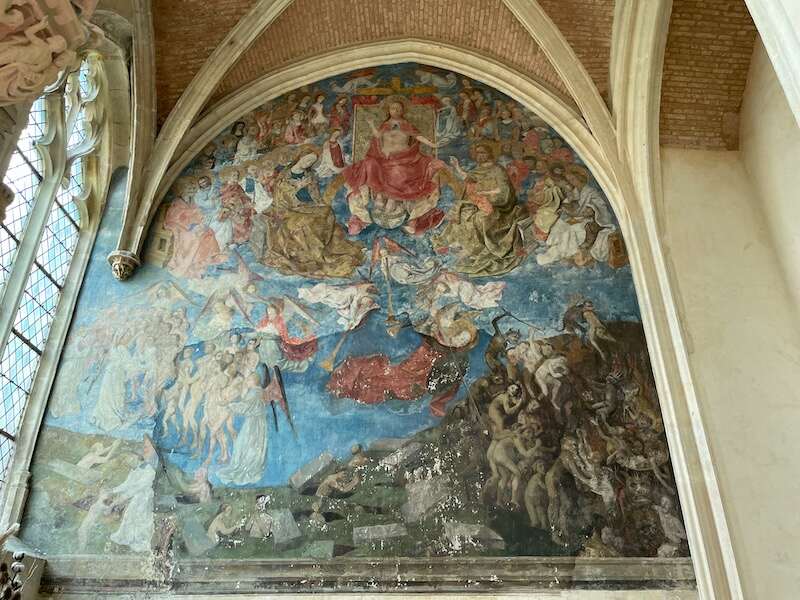
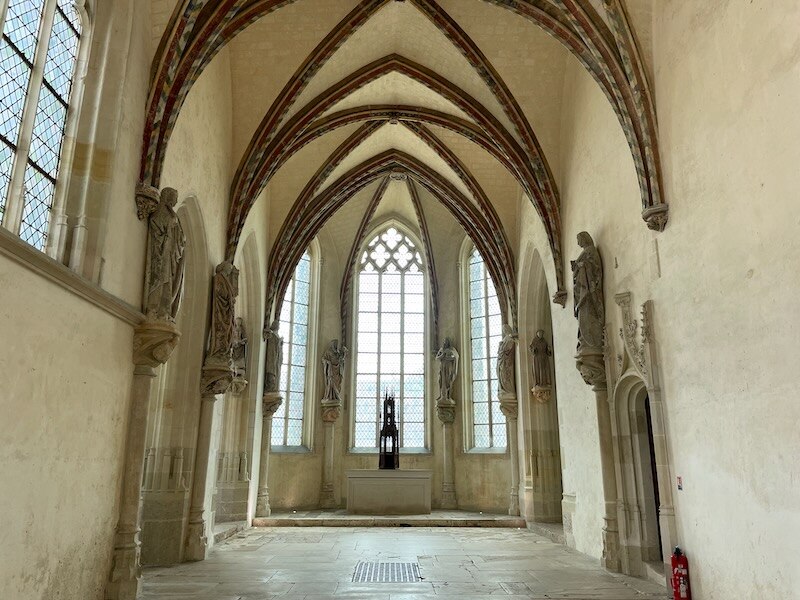 Chateaudun Chapel as soon as held a holy relic, however the French Revolution destroyed the inside, leaving solely statues and a fresco. ©OffbeatFrance/Leyla Alyanak
Chateaudun Chapel as soon as held a holy relic, however the French Revolution destroyed the inside, leaving solely statues and a fresco. ©OffbeatFrance/Leyla AlyanakArchitecturally talking, the excellent options of Chateaudun are its dungeon, the chapel and the staircase. I used to be additionally attracted by the radically completely different types of the entrance and the again (a sense I additionally skilled on the Château d’Amboise) making it tough to reconcile the 2, no less than at first.
Throughout his lifetime, Jean de Dunois was undoubtedly extra well-known than Joan of Arc: a famend soldier and diplomat, and a relative of the king. But at the moment, we all know him virtually completely as a part of Joan of Arc’s military. A coincidence.

Tips on how to go to
- There’s a direct prepare to Chateaudun from Paris, which makes issues simpler.
- You possibly can drive by way of the A10 and A11, which takes about 2 hours.
- You should buy your tickets forward of time right here if it’s excessive season. In any other case, simply present up.
Château d’Anet
The Château d’Anet, not like Chateaudun, was born of a single particular person’s need: Diane de Poitiers, mistress of King Henri II. The king would go to usually to hunt with the sporty Diane, which sat none too nicely together with his spouse, the indomitable (however distinctly much less enticing) Catherine of Medici.
Regardless of – Catherine would get her revenge.
To design her château, Diane – a patron of the humanities and lover of lovely issues – introduced in none aside from Philibert de l’Orme, the king’s favourite architect (who was additionally accountable for Fontainebleau). The end result was architecturally splendid, the nation’s first true French Renaissance château.
Inbuilt 1548 over the remnants of two earlier castles, every thing about it screams Renaissance, from the sculpted reliefs by Jean Goujon, to these classical proportions and symmetry, decorative façades, pilasters and pediments, intricate carvings and sculptural niches. And it was all overseen (and paid for) by Diane.
Apart from being a Renaissance showcase, what actually attracts us listed here are Diane and Henri, theirs being certainly one of France’s most recognizable love tales.
A widow, she is known as governess to slightly prince; the prince (alongside together with his brother) is exiled to Spain in trade for his captive father; upon returning he meets Diane once more; after some time they turn out to be lovers (she is 20 years his senior); he offers her Chenonceau Fortress as a present, intensifying Catherine’s ire.
So when a jousting wound kills Henri prematurely, Catherine wastes no time expelling Diane from Chenonceau, which she had lengthy coveted, and Diane retires right here, to the Château d’Anet. As they are saying in French, “Revenge is a dish greatest eaten chilly.”
From the skin, the château is spectacular, with moats (now grassed over), a spectacular entrance and loads of Renaissance reminders.
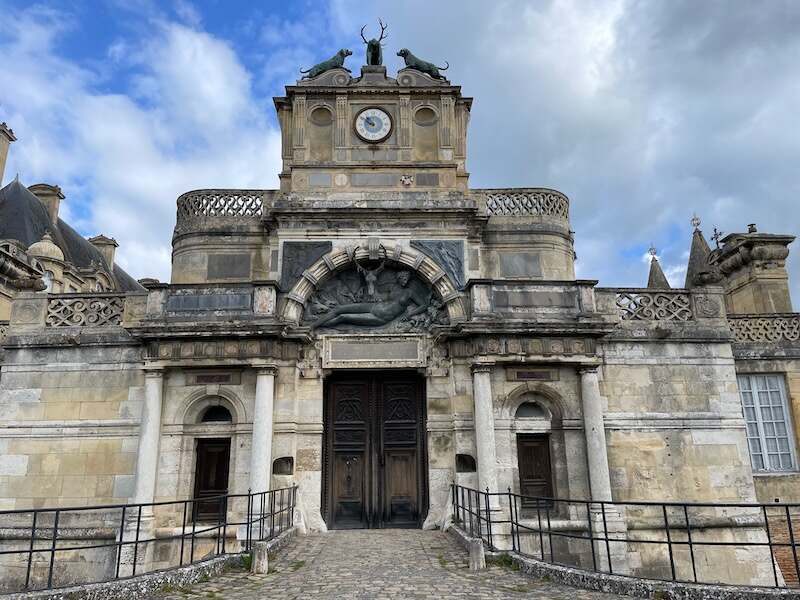
Just one wing stays of the construction constructed by Diane, however we all know loads concerning the unique from latest archeological discoveries of a cryptocporticus, a Roman-style lined hall, and several other different foundations. A few of Diane’s unique possessions, like her mattress, are nonetheless right here.
The Revolution was unkind to the château, as it could be to many nationwide treasures. The gardens have been destroyed, the wing utilized by Diane and Henri was razed, and many of the furnishings have been scattered. A dozen stained glass home windows that when graced the chapel now sit within the Chartres Musée des Beaux-Arts. Different gadgets ended up within the Museum of Nationwide Monuments in Paris or within the Louvre.
Essentially the most seen stays of her presence are her monograms, the letter “D”, usually intertwined with Henri’s H, and the numerous crescents scattered all through the château’s decor (the moon was Diane’s emblem though she, unusually sufficient, was moonphobic).
 Diane’s monogram and moon image. ©OffbeatFrance/Leyla Alyanak
Diane’s monogram and moon image. ©OffbeatFrance/Leyla AlyanakTwo buildings stay from Diane’s time which are the château’s “pièces de résistance”: the royal chapel, and Diane’s funeral chapel.
Philibert de l’Orme’s royal chapel is an ornamental marvel, its Roman-style cupola reaching as much as the sky like a whirlpool. A good better stroke of genius is the marble ground under, designed to reflect the cupola’s intricacies.
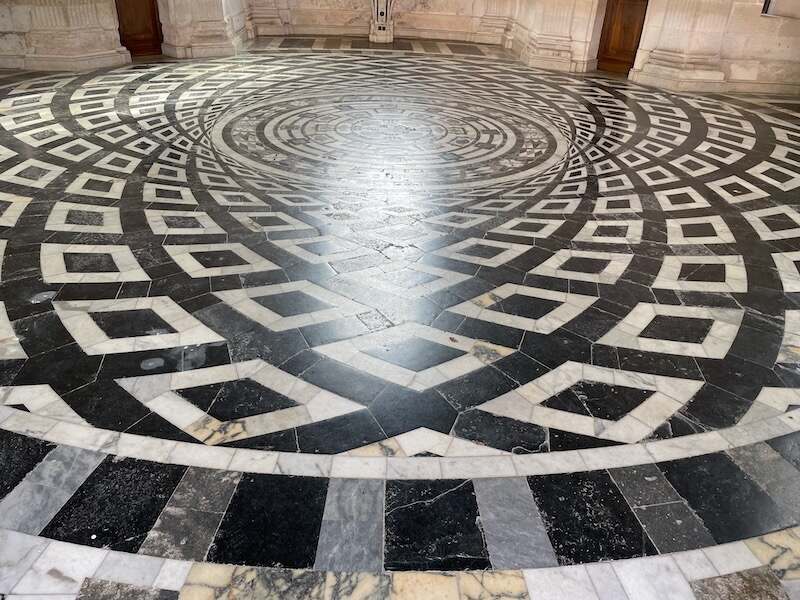 Flooring of the Royal Chapel at Château d’Anet. ©OffbeatFrance/Leyla Alyanak
Flooring of the Royal Chapel at Château d’Anet. ©OffbeatFrance/Leyla AlyanakAs for the funeral chapel, it was commissioned by Diane earlier than her demise and she or he was buried right here. However she wouldn’t keep.
Revolutionary authorities opened the sarcophagus to retrieve the lead of which it was made – they wanted bullets – and eliminated her physique, which ended up within the native cemetery.
In 2008, shock: a bunch of scientists visited the cemetery to investigate her stays. They found her physique had 250 instances extra gold than common, which helped them establish her, since Diane was identified for usually ingesting gold. Recognized positively, she was changed in her sarcophagus in 2010, the place she nonetheless lies at the moment.
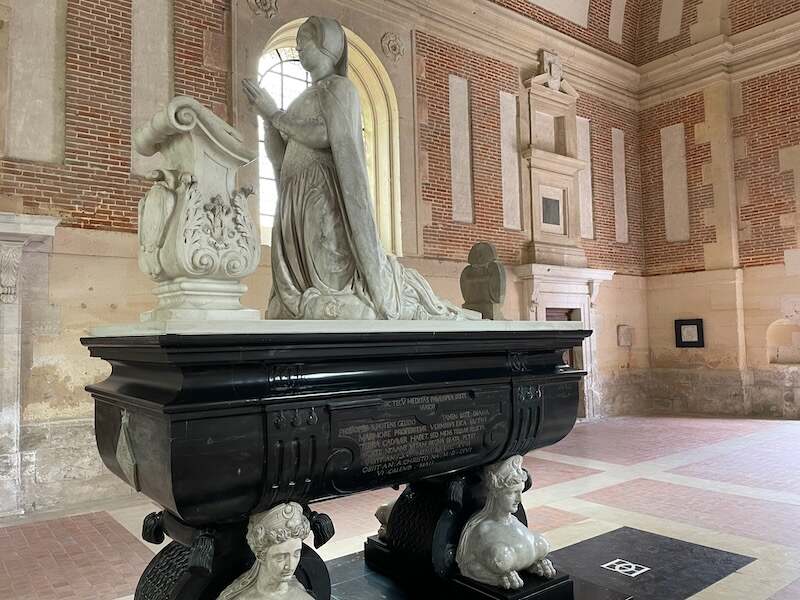 Diane de Poitiers funeral chapel and the sarcophagus during which her stays nonetheless lie at the moment. ©OffbeatFrance/Leyla Alyanak
Diane de Poitiers funeral chapel and the sarcophagus during which her stays nonetheless lie at the moment. ©OffbeatFrance/Leyla AlyanakDiane was a lady past her time: she was sporty, bathing each day in chilly water, and a huntress, as befits her title; she was sensible and erudite, and politically savvy. Her enterprise sense allowed her to amass a fortune in properties throughout her lifetime, and her love affair with Henri II marked France. That is one girl historical past is not going to neglect.
After Diane’s demise, Anet can be handed round by means of kinfolk and a few restoration efforts can be made – not with the happiest outcomes. Her fountain can be displaced, the gardens redone, stained glass home windows eliminated and the inside rearranged.
At the moment, it’s owned privately and inhabited by the Yturbe household, who has opened elements of the château to guests. And whereas most of Diane’s furnishings and possessions have gone, efforts have been made to interchange them with gadgets from the identical interval so that you could be nicely really feel you’ve walked again into the sixteenth century for some time.
Tips on how to go to
- You possibly can drive from Paris to Anet alongside the N12 (round 1h30m)
- You possibly can take public transport nevertheless it’s sophisticated, as you need to first take a prepare to Mantes-la-Jolie (from Montparnasse station in Paris) after which change to a bus, getting off at Boxhorn in Ézy-sur-Eure. The château is a 5-minute stroll away. There are a number of connections a day however this may require some planning.
- The château could be visited most afternoons however it’s essential reserve, since you’ll be able to solely enter with a information. Use this way to ebook a tour (€11 on the time of writing).
- Throughout the road from the château is the Renaissance Interpretation Middle, with interactive reveals and an in-depth have a look at Diana and her time on the château.
Château de Maintenon
Whereas Diane semi-ruled over France from the bed room, Madame de Maintenon did one higher: she married a king!
It was a very unlikely end result to her modest begin in life.
Françoise d’Aubigné, her actual title, was born in a debtor’s jail, the place her father was serving time together with his spouse in tow. She would finally marry a far older and chronically ailing poet and playwright. Upon his demise, she would turn out to be governess to King Louis XIV’s illegitimate kids, introduced in by the king’s then favourite mistress, Madame de Montespan.
When Montespan’s reign as king’s favourite ended, Madame de Maintenon started taking her place, finally marrying the king in secret, as she was of “inferior” social rank. She would undoubtedly have affect over him, however her actual political affect is unknown. In any other case, she is most well-known for having based St. Cyr, a college for younger women, which Napoleon finally become France’s famend navy academy. She is buried there.
Alongside the way in which, the king helped her purchase the Château de Maintenon and switch the previous Thirteenth-century fortress into the comfy early Renaissance citadel we all know at the moment.
The château itself is a delight to go to, with many reminders of its illustrious former proprietor – leather-based wall coverings, a Gothic chapel, a library displaying her ebook assortment, or the “salon du roi”, the room occupied by Louis XIV when he visited.




The château exterior is each bit as compelling as its inside, with its combination of types however, most fascinating to me, is the unfinished aqueduct that sits on the backside of the formal French gardens.
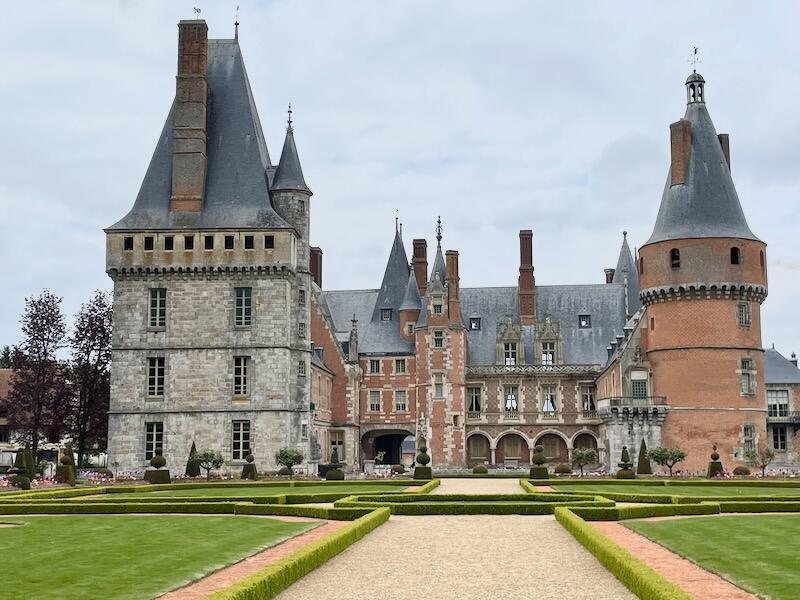

The aqueduct turned out to be a king’s folly.
Determined to deliver water to Versailles, Louis XIV thought he may divert the waters of the Eure river, some 80km/50mi away. His chief engineer, the fabulous Vauban, urged an underground piping system, however Louis’s ego needed his works to be seen: he opted for a hovering aqueduct, in elements larger than Notre-Dame in Paris.
However the venture was deserted earlier than it was even completed. Lots of the employees (10,000 would die constructing this aqueduct) have been troopers and when struggle broke out just a few years later, they have been despatched to the entrance, depriving the location of manpower. Through the years, it could start to crumble, its stones carted off to construct palaces and partitions elsewhere. At the moment, it’s not in nice form, and a neighborhood affiliation is doing its greatest to guard it from additional deterioration.
Tips on how to go to
- You possibly can drive from Paris alongside the A10 (1h30m)
- You possibly can catch a direct prepare from Paris (Montparnasse station) in nicely beneath an hour
- You don’t want an advance ticket and can purchase it instantly within the present store while you arrive.
- If you happen to’re right here at lunchtime, there’s a stunning little restaurant available on the market sq. a few blocks from the château referred to as “Aux Deux M”, with inexpensive genuine dishes. Ensure you reserve as a result of it’s small.
Earlier than you go…
Every of those châteaux is in a roundabout way a testomony to the ladies who lived in these instances. Chateaudun, a medieval fortress with loads of Gothic (and an Italianate staircase!) displays the rise of Jean de Dunois, made traditionally well-known by means of his help of Joan of Arc. Anet, in fact, was the Renaissance jewel of Diane de Poitiers, the place her relationship with Henri II was allowed to flourish. And eventually, Maintenon options King Louis XIV’s ambition however reveals Madame de Maintenon extraordinary social rise. Every of those maps a layer of French historical past.
If you happen to’re eager on castles, then head over to those different tales:
Did you get pleasure from this text? I would love should you shared it!
















